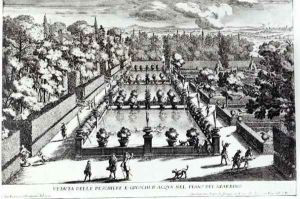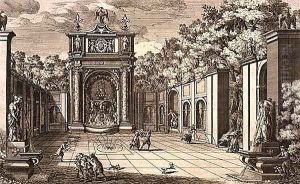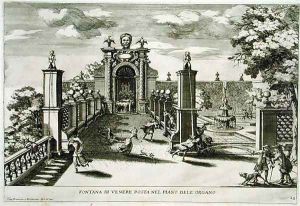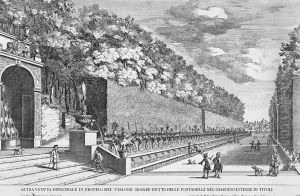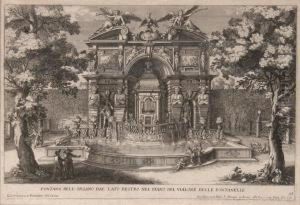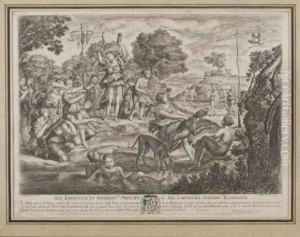Giovanni Francesco Venturini Paintings
Giovanni Francesco Venturini was an Italian painter and engraver born in 1650 in Rome. He was a lesser-known figure during the Baroque period, a time characterized by dramatic expression and grandeur in the arts. Venturini's work is often overshadowed by the more prominent artists of his era, such as Caravaggio, Bernini, and Borromini, but he contributed to the rich tapestry of Baroque art with his own unique perspective and style.
Venturini's artistic journey is not well-documented, and much of his life remains shrouded in mystery. However, it is known that he was active during the late 17th and early 18th centuries, a period during which Rome was a hub of artistic innovation and production. He would have been exposed to the works of many great artists and the vibrant cultural life of the city.
Venturini's works included religious themes, which were popular during the Baroque era, as the Catholic Church was a primary patron of the arts, commissioning works to convey spiritual messages and glorify the church. His paintings are characterized by their dynamic composition, vivid colors, and the dramatic use of light and shadow, following the Baroque tradition.
In addition to painting, Venturini was also recognized for his skill in engraving. Engraving was a significant art form during this period, as it allowed for the reproduction and dissemination of artworks, which was important for artists seeking to gain fame and for the spread of stylistic trends and artistic ideas across Europe.
Giovanni Francesco Venturini passed away in 1710, leaving behind a body of work that, while not as extensive or renowned as some of his contemporaries, provides insight into the diversity and skill of artists during the Baroque period. His contributions to painting and engraving continue to be appreciated by art historians and enthusiasts who seek to understand the full spectrum of artistic expression during this prolific era of art history.
